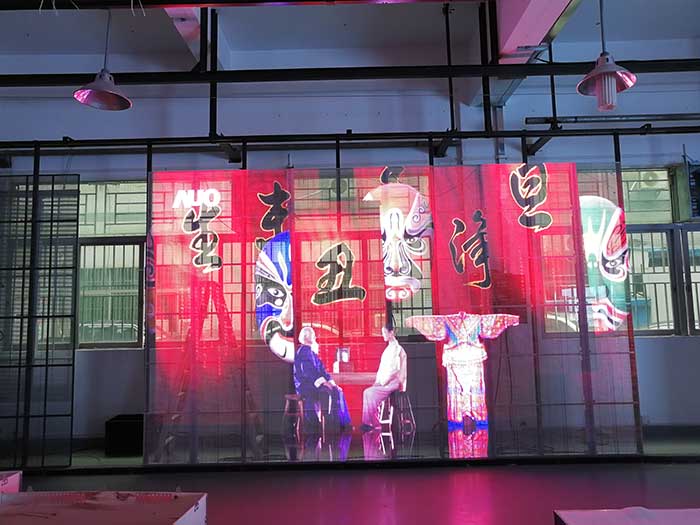LED display screens are one of the common large screens we use. As the most promising display product in the future, LED screens have shown many functions and effects in just a few years since 2008. Nowadays, whether outdoors or indoors, LED displays have been recognized by people. As a customer, how should we establish an acceptance standard for the production of LED display screens?

1、 Screen appearance inspection
Testing method: Visual inspection and tactile sensation can preliminarily determine whether there is a problem with the LED screen body
1. Coating adhesion: There should be no peeling phenomenon (including intersections)
2. Whether the color is consistent, or there is a phenomenon of color deviation, or even a lack of brightness. The color matches the sample (normal visual acuity observed under natural light or fluorescent light without significant color difference), and there is no color difference in the same batch of products (note: color difference includes color and glossiness); The coating surface should be smooth, flat, and uniform, and there should be no defects on the surface such as non drying, back sticking, particles, bottom leakage, pitting, blooming, wrinkling, or mechanical damage;
3. Screen printing appearance: The screen printing content should be clear, complete, uniform in color, without burrs, defects, dragging, or contamination; The specific content, position, pattern, and font size of all silk screen printing shall be described in detail by the corresponding drawings, and the manufacturer shall strictly follow the design requirements of the drawings for silk screen printing.
2、 Inspection of LED display screen box
Testing method: Actual measurement Testing tools: Vernier caliper, tape measure, level.
Requirement: Inspectors must strictly follow the design personnel’s drawings to inspect the incoming materials of the display screen box one by one, checking for any missing or missing parts. The box inspection should pay attention to the following issues:
1. The deviation of the external dimensions of the LED box shall not exceed 0.5mm, and the difference between the two diagonals shall not exceed 1mm.
2. Check if burrs have been removed, if sharp corners have been rounded off, and no scraping or stabbing is allowed.
3. Each nut and nut post must undergo tooth return treatment to ensure that the screws can be smoothly locked in.
4. Check whether the overall assembly requirements of the box are processed truthfully according to the drawings. All accessories (such as locks and hinges) must use existing standard parts, and their mechanical strength and sealing performance must be ensured during assembly.
5. The welding at each welding point of the box must be firm, without any false welding, missing welding, etc. The welding points must be ground flat, and the welding seams need to be scraped with dust. The treatment process must be strictly standardized. The welding seam must be polished, sealed and waterproof, smooth and flat without sharp corners.
6. After punching and welding the holes of the LED module, the flatness of the front side should be ensured, and there should be no warping or deformation on the surrounding panels. The flatness error should be less than 1mm; Strictly control the size of the positioning holes on the front panel of the box, with an error of less than 0.1mm in aperture size and hole spacing; The X and Y directions of the group hole axis should be on the same straight line, and the straight lines should be perpendicular to the edge of the box, with a verticality of less than 1mm.
3、 Display effect verification
1. The Restorability of Colors
The color restoration refers to the display screen’s ability to restore colors. Simply put, it means that the colors displayed on the display screen must be highly consistent with the colors of the original video, in order to ensure a high degree of image restoration.
2. Is there any color block on the display screen
Color blocks refer to the significant color difference between adjacent modules of a display screen. The main reason for the generation of color blocks is the poor control system of LED display screens, which have low grayscale levels and low scanning frequencies.
3. Whether there are mosaics and dead spots
Mosaic refers to the four square blocks that appear on the LED display screen, which are usually bright or dark, mainly caused by module necrosis; Dead spots refer to individual light spots that appear on an LED display screen that are constantly bright or dark, and the number of dead spots is determined by the quality of the LED display screen’s chip.
4. Display brightness and viewing angle
The brightness of indoor full-color LED display screens should be above 800cd/㎡, and the brightness of outdoor full-color LED display screens should be above 1500cd/㎡ to ensure the normal operation of LED display screens. Otherwise, it may cause the brightness to be too low and the image cannot be seen clearly, or the brightness to be too high and appear dazzling. The brightness of LED display screens is mainly determined by the quality of the LED chips, while the size of the viewing angle is determined by the packaging method of the chips. The larger the viewing angle, the more the audience will be.
5. Flatness
The surface flatness of the display screen should be within ± 1mm to ensure that the displayed image is not distorted. Local protrusions or indentations may cause blind spots in the viewing angle of the display screen. The gap between the box and the module should be within 1mm. If the gap is too large, it can cause clear boundaries and visual dissonance on the display screen. The smoothness is mainly determined by the production process.
6. Display screen stability
Stability refers to the reliable quality of LED display screens during the aging stage after being made into finished products. You can ask the manufacturer for aging records to determine the number of conditions that occur during the screen aging period.
